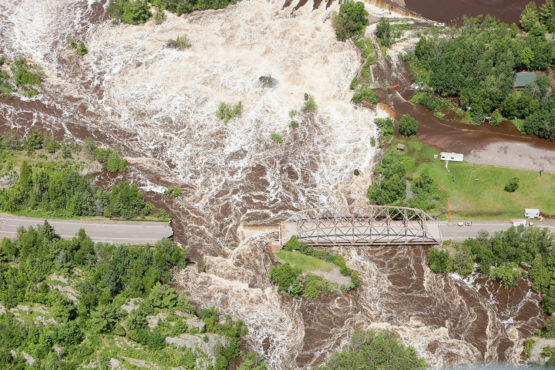When President Joe Biden addresses a joint session of Congress tonight a common thread will likely run through much of his narrative: resilience. Beyond touting his administration’s accomplishments, Biden is expected to use the spotlight to pitch his $2.3 trillion American Jobs Plan, a wide-ranging infrastructure initiative that promises “every dollar” spent on rebuilding highways, airports, water systems and more will be used to “prevent, reduce and withstand the impacts of the climate crisis.”


Below, Stanford engineering, climate and geophysics experts discuss why climate change resiliency is at the center of federal infrastructure plans, how it could affect underserved communities and where to target investment for maximum impact. The researchers include Jack Baker, a professor of civil and environmental engineering who leads the Stanford Urban Resilience Initiative; Sarah Billington a professor of civil and environmental engineering who studies building design and materials and their impact on human wellbeing; Noah Diffenbaugh, the Kara J Foundation Professor in the School of Earth, Energy & Environmental Sciences and an appointee to the California Climate-Safe Infrastructure Working Group; Sarah Fletcher, an assistant professor of civil and environmental engineering who studies water resources and climate change adaptation from a socio-technical systems perspective; Jenny Suckale, an assistant professor of geophysics who leads the Stanford Future Bay Initiative and has worked as a scientific consultant for international organizations aiming to reduce the impact of natural and environmental disasters in vulnerable communities.
How could climate change-resilient infrastructure affect the lives of average people?
Suckale: Infrastructure already affects the lives of average people in numerous ways. The main issue with not considering climate change in infrastructure planning is that infrastructure can mitigate but also create risk. A floodwall, for example, keeps water out but also keeps water in if the wall is overrun or if there are other sources of flooding such as rainfall. If we do not consider climate change in infrastructure planning, we will inevitably see more adverse effects or risks that stem from the fact that existing infrastructure is designed for the past, not the future.
Diffenbaugh: Infrastructure is at the nexus of greenhouse gas mitigation, climate change adaptation and environmental justice. Specifically, investments in climate-safe energy, transportation, water and communications systems and technologies offer “win-win-win” opportunities to reduce greenhouse gas emissions, increase resilience to climate stresses and ensure access to energy, food, and clean air and water.
How should we quantify the impacts of the investments outlined in President Biden’s infrastructure plan? How can we best ensure that our infrastructure stays resilient in the future?
Baker: We can no longer look at past performance of our infrastructure and say, “we want more of that.” Society increasingly has higher expectations for resilience, and systems that worked in the past will not work in the future. We need science and engineering models to help us understand future demands on our infrastructure, help us design for increased demands, including adaptive features and help us quantify benefits relative to a status quo path.
Fletcher: Our infrastructure must be prepared to handle a wider range of climate conditions than ever before. In order to make our scarce resources for resilience go farther, we need to identify which infrastructure systems need to be hardened today vs. where we can take a wait-and-see approach to adapt our infrastructure as the climate changes. We must also consider how infrastructure systems interact with our society, and build community resilience as well. If electricity systems fail during a storm, we need to make sure backup plans are in place so that people still have access to water, heat, and medical care. These plans should start with our most vulnerable communities.
What are some potential downsides of investing in resilient infrastructure?
Suckale: It ultimately depends on what is considered “infrastructure.” It is easy to associate “infrastructure” only with “grey” solutions, such as drains, dams or roads, but there are compelling alternatives in working with nature rather than against it. These “green” solutions can range from restored ecosystems mitigating flood risk to trees in urban areas improving air quality and have the advantage of being naturally adaptive. My hope is that this initiative will adopt a broad definition of infrastructure that goes beyond the “grey” and hopefully includes green and other colors of the rainbow.
How does climate-safe infrastructure relate to under-served communities and racial justice?
Baker: Privileged households are more likely to have resources to navigate disasters by relocating, paying for repairs and using savings to compensate for lost income. So, disadvantaged households are often much more affected, even for the same level of physical disruption. They are also often more affected due to living in higher-risk areas. Further, under-served communities often struggle to access recovery funding and advocate for infrastructure repairs.
Billington: Recently, strong linkages have been found between design features of the built environment and historical housing policies that may be directly responsible for disproportionate exposure of underserved populations to current heat events. Addressing urban heat island effects through attention to both built and natural infrastructure in cities can help address these inequities.
How can policymakers at federal, state and municipal levels assess and support decision-making around related issues, such as building codes, resilience planning initiatives and investment decisions?
Baker: Relevant agencies should require infrastructure projects to be designed while considering future risks from climate change. Reinstating the Obama-era Federal Flood Risk Management Standard would be a good step in this direction. Private entities should also be required to assess and report their risk from exposure to climate change impacts – increased transparency about these risks would benefit all decision-makers.
What about the carbon footprint of infrastructure itself – what can we do to reduce it?
Billington: In the U.S., buildings alone account for over 30 percent of our greenhouse gas emissions and 40 percent of total energy consumption. The average building designer has a potentially thousand-fold greater impact on atmospheric carbon dioxide than the behavior of an average citizen over their lifetime. The carbon dioxide avoidance possible through decarbonizing buildings both in terms of materials used and energy for operations is on the order of Gigatons. It’s big.







































